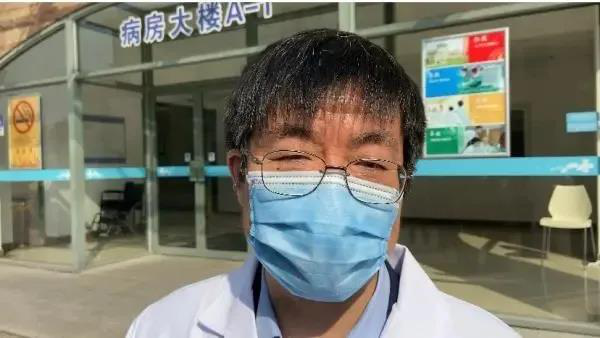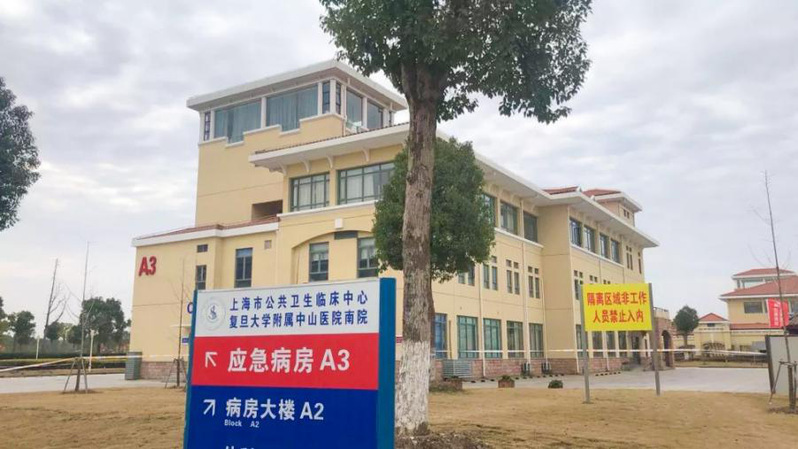
As of Feb. 25, COVID-19 cure rate in Shanghai has exceeded 81%. All adults tested positive for COVID-19 in Shanghai are treated at Fudan-Affliated Shanghai Public Health Clinical Center (SPHCC).

Doctor Hu Bijie
On Feb. 22, 16 COVID-19 patients are cured and discharged from SPHCC. On the following day, another 22 patients were discharged.
Hu Bijie, member of the Shanghai medical rescue expert group now stationed at Shanghai Public Health Clinical Center and director of the Infectious Diseases Department at Fudan-Zhongshan hospital, said among these cured patients, some had experienced severe hypoxia and respiratory failure; some had been reliant on mechanical ventilation; and some had been treated with high-flow oxygen therapy.
“Among the four critically-ill patients we cured and discharged on Feb. 22, two are seniors aged over 65, but the other two aged only 47 and 52. So we looked into their medical records.” It turned out one of the latter two younger patients had diabetes and the other coronary heart disease and had previously received interventional therapy.
“We have always been emphasizing the importance of identifying those susceptible to severe symptoms. We must take the initiative against the epidemic through early detection and early diagnosis,” said Hu. The composition of critically-ill patients is consistent with his predictions. Seniors and those patients with chronic diseases are the most vulnerable groups.
Hu told Fudan News Center, patients at Fudan-SPHCC are given antiviral drugs as deemed most effective by Shanghai’s top medical experts. The use of hormones is restricted to small doses each day for a maximum period of three days to protect the patients’ immune system. The medics also keep an eye on any changes in the digestive system, sleep pattern and mood of the patients.

Doctor Shen Yinzhong
Shen Yinzhong, director of the Department of Infection and Immunity of SPHCC, said the treatment of severe patients requires close collaboration of medics across various departments, including intensive care, respiratory, ICU and traditional Chinese medicine.
“These patients suffer multiple diseases, such as respiratory and heart diseases, etc. Their treatment needs the effort of a multidisciplinary team.” Shen said, many severely-ill patients have chronic diseases, such as hypertension, diabetes, etc., and therefore, keeping their blood pressure and blood sugar levels under control will be helpful to their recovery from COVID-19 infection.
When asked if COVID-19 could induce complications in patients already suffering chronic diseases, Shen said yes ——on the one hand, if a patient with chronic diseases is infected with the COVID-19, his conditions tend to aggravate; on the other hand, the infection may pose dangers to the control of chronic diseases such as diabetes and hypertension. “It takes time for people to get to the bottom of an emerging disease.”
He also pointed out that the application of new technologies, such as high-flow oxygen and ECMO, was crucial to the rescue of severely-ill patients.

Shanghai Public Health Clinical Center
In this fight against the epidemic, artificial intelligence (AI) is helping doctors with the diagnosis of COVID-19. According to a report by Sixth Tone, a local English language news media, SPHCC has collaborated with a local tech company called Yitu Technology to develop an AI-equipped diagnostic assistant to accelerate analyzing CT scans for COVID-19.
Shan Fei, a senior radiologist at Fudan-SPHCC, told Sixth Tone that each patient might have 300 to 400 scans, and analyzing them might take up to 10 minutes. The process used to rely heavily on a doctor’s experience as they had to eyeball the proportion of shadow relative to lung tissue. In comparison, AI can discover minor pathological changes in the lungs at very early stages.
The 600-bed Fudan-SPHCC began operation in October 2004 after SARS died down, focusing on medical relief during public health emergencies. 327 beds at the hospital are fully outfitted with negative pressure systems which can reduce the risk of airborne transmission by restricting airflow between rooms. However, such facilities remain a relative rarity in China, and in most cases, hospitals only have one or two such beds.
Editor: Deng Jianguo